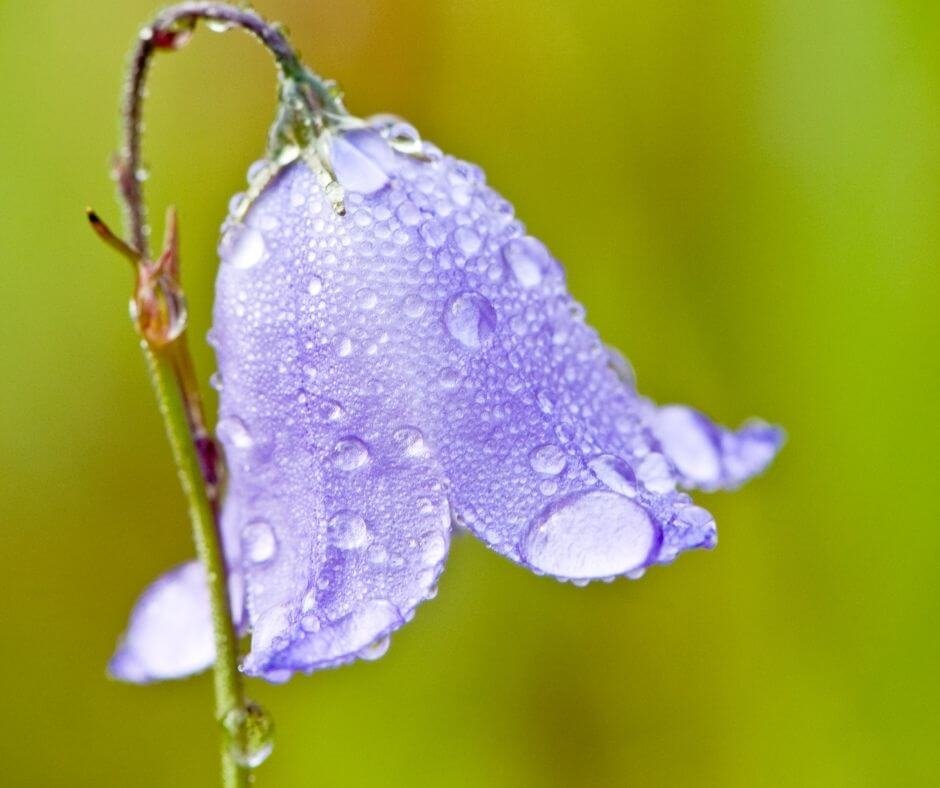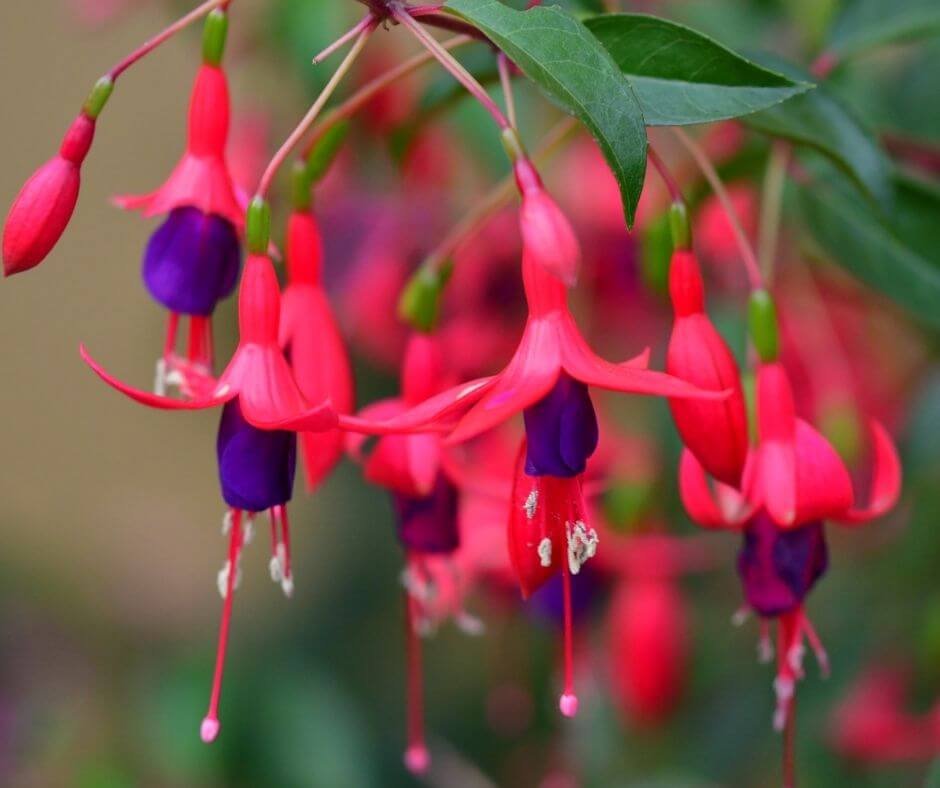The Most Beautiful Bell-Shaped Flowers to Add to Your Garden
Flowers that look like bells
Looking for something beautiful to add to your garden? Check out these bell-shaped flowers! They are sure to add a touch of elegance and style. These flowers look like bells, hence the name, and they come in a variety of colors. Whether you're looking for something subtle or eye-catching, these flowers have you covered. So why not add them to your garden today?
The items listed are accompanied by affiliate links, meaning I earn a small commission if a purchase is made through my links. This has no impact on the cost to the consumer. I link to products this way whenever possible, and it has no bearing on the products I choose to review or recommend.
Bell Shaped Flowers
Fuchsia
Fuchsia is a bell-shaped flower that is native to Central and South America. There are over 100 species of Fuchsia, and they come in a wide range of colors, including pink, purple, red, and white.
Fuchsias are popular garden plants, and they are often used in hanging baskets. These beautiful flowers prefer cooler temperatures. Make sure they are in partial shade and that you protect them during the dog days of summer.
Fuchsia is a relatively easy bell flower to care for, but it can be susceptible to powdery mildew and root rot.
To keep them thriving, pinch them back once a branch has finished blooming since fuchsia flowers on only new growth. It also likes to be fed every two weeks during the spring and early summer months.
With its bell-shaped flowers, it adds a touch of whimsy to any garden.
Bellflower-Campanula
The bellflower, or Campanula, is a bell-shaped flower that is native to Europe and Asia. There are over 300 species of bellflowers, and they come in a variety of colors but are most known for their blue and purple bell-shaped flowers.
Bellflowers are relatively easy to grow and make for lovely additions to any garden. They prefer full sun and well-drained soil.
In June and July, bellflowers will be in full bloom, but they can adorn you with flowers into October in certain regions.
They can be grown from seed, but they can also be propagated by root division in the spring.
With a little care, bellflowers will reward you with beautiful blooms for many summers to come.
Lily of the Valley
The Lily of the Valley is a bell-shaped flower that is native to Europe and Asia. It's one of the most popular flowers in the world and is known for its sweet fragrance. The Lily of the Valley comes in pink or white bell-shaped flowers.
This flower is poisonous if ingested, so take care if you have pets or small children. It's best to plant them in an area where they can't be easily reached. In some parts it is considered an invasive plant, so make sure to check your local laws before planting.
Other than that, the Lily of the Valley is a relatively easy plant to take care of. It prefers partial shade and moist soil.
In the fall, you may plant Lily of the valley by root cuttings, potted nursery plants, or seeds.
Foxglove
Foxglove (Digitalis purpurea) is a delightful addition to any garden, with its bell-shaped flowers and striking colors. These beautiful blooms come in a variety of hues, including purple, white, yellow, red, and pink flowers.
Foxglove is relatively easy to care for, and they make an excellent choice for beginner gardeners. The plants bloom best in full sun, but they will also tolerate partial shade.
Foxglove flowers are deer and rabbit resistant and attract bees and butterflies, making them a great choice for wildlife gardens.
Foxglove can easily reseed itself, so be sure to deadhead the flowers if you don't want them to spread. It is also important to note that foxglove is poisonous to humans and animals if ingested, so take care when planting them in areas where children and pets play.
Stinking Hellebore
The stinking hellebore (Helleborus foetidus) is a bell-shaped flower that is native to Europe. This plant has a strong stench when its leaves are crushed or damaged, as the name implies. But don't let the smell deter you from adding this beautiful bell-shaped flower to your garden!
The stinking hellebore has pale green bell-shaped flowers and this evergreen has crimson-tinged stems, fingerlike leaves, and flower stalks.
It likes partial shade and well-draining soil and is drought tolerant once established. It is also found to be deer resistant. It's a slow-growing plant often found in clumps or clusters.
It blooms very early in spring, often before the last frost. Propagate by seed or root divisions in fall or spring.
It is toxic to humans and animals if ingested, so handle with care.
Spring Snowflake
The spring snowflake (Leucojum vernum) is a white bell-shaped flower that blooms in early spring. It's a bulbous perennial that's native to Europe and Asia. The dangling bell-shaped flowers display white petals with yellow-tipped segments.
This plant prefers moist, well-drained soil and does best in areas with full sun to partial shade. But it will tolerate boggy conditions and clay soil.
The spring snowflake is not to be confused with snowdrops which is a different species of plant.
Snowdrop
Snowdrop (Galanthus nivalis) is one of the first flowers to bloom in spring. They are small, white bell-shaped flowers with six petals. The inner petals are a little smaller and have green markings on them. Snowdrops are native to Europe and grow best in woodlands. They are a bulbous perennial.
Snowdrops prefer moist, well-drained soil and do best in areas with full sun to partial shade. They are also found in snowbanks and at the edges of woods.
Propagate by bulb offsets or division. While they are very easy to grow, they can be a little tricky to get started because they need a period of cold dormancy. You can plant them in the fall.
Snowdrops are toxic to humans and animals if ingested, so take care when planting them in areas where children and pets play.
Canterbury Bell
Canterbury bell (Campanula medium) are beautiful bell-shaped flowers that bloom in shades of blue, pink, purple, and white. They are a biennial plant that is native to southern Europe. The flowers grow on tall stems and are often used in cut flower arrangements.
The Canterbury bell flower prefers full sun to partial shade and well-drained soil. They are tolerant of a wide range of soils, including clay. They prefer cooler temperatures and do not do well in heat or humidity.
Canterbury bells will self-seed, so be sure to deadhead the flowers if you don't want them to spread. Propagate by seed and plant the seeds in late summer.
Angel’s Trumpet
Angel’s trumpet (Brugmansia ) is a tropical evergreen shrub or tree that can grow up to 20 feet tall. The huge and pendulous flowers are white, pink, yellow, or apricot colored and have a sweet fragrance. They are bell-shaped and hang down from the branches.
Angel’s trumpet is native to South America but can be found in many tropical and subtropical areas. It prefers full sun to partial shade and moist, well-drained soil.
Hummingbirds and other pollinators are attracted to this flowering plant.
While it is a beautiful plant, it is important to be careful with Angel's trumpet as all parts of this tall plant are poisonous.
Columbine
Columbine (Aquilegia) is a bell-shaped flower that blooms in shades of blue, pink, purple, yellow, red, and white. They are a perennial flower that is native to Europe and the United States. The flowers grow on tall stems and are often used in cut flower arrangements.
Columbine prefers full sun to partial shade and well-drained soil. They are not tolerant of poorly drained soils.
Pollinators love columbine's bell-shaped blooms. To encourage pollinators in your garden, plant a variety of columbine flowers with different colors.
Columbine is easy to grow from seed. Plant the seeds in early spring after any possibility of frost has passed.
These flowers that look like bells will self-seed, so be sure to deadhead the flowers if you don't want them to spread. Although will then do cross-pollinate you may get some beautiful hybrids.
Bluebells
Bluebells (Hyacinthoides nonscripta) are bell-shaped flowers that bloom in shades of blue and purple. They are a perennial wildflower bulb that is native to Europe. They are some of the sweetest-smelling flowers which are probably why they attract so many bees!
Up-turned lips droop on top of clumps of blue bell-shaped blooms. Each flower produces creamy white pollen with six petals per bloom.
Bluebells prefer moist, well-drained soil and do best in areas with partial shade. They are also found in woodlands.
Propagate by bulb offsets or division. Bluebells are beautiful flowers that are very easy to grow and can be planted in late summer.
Snake Head Fritillary
The bell-shaped flowers of the Snake Head Fritillary (Fritillaria meleagris) make it a standout in the spring garden. It is a member of the lily family and is native to Europe. Although typically a deep purple flower, the blossoms can also be white, pink, or lilac. The distinctive checkered pattern of the flowers is created by their sharply contrasting colored petals.
The plant prefers to grow in moist, shady areas and is often found growing in woodlands. Snake head fritillary prefers cooler weather. Its bell-like flowers are known to attract bees.
This bulb is easy to grow from and can be planted in the fall.
Why Plant Bell Shaped Flowers?
Bell-shaped flowers are a great addition to any garden. They come in a variety of colors and sizes, and they attract pollinators like bees and hummingbirds. Plus, they're easy to grow! And a lot of them are deer and rabbit resistant. So if you're looking for a beautiful, low-maintenance flower to add to your garden, consider planting one of these bell-shaped flowers.


























